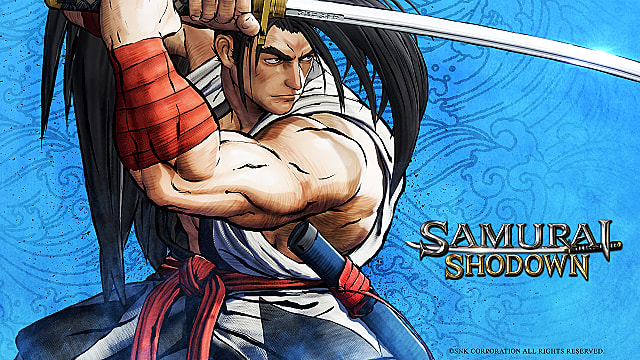

The first Samurai Shodown game first hit arcades in 1993, hot on the heels of Street Fighter 2 and Mortal Kombat. Made by veteran fighting game developers SNK, Samurai Shodown's central draw was big, anime-inspired fighters wielding swords and other weapons.
Despite this hook, the Samurai Shodown series never quite took hold like the other titans of the genre. The series has been on hiatus since 2008 and, like the newest entries in the Mortal Kombat series, this latest edition of the brawler serves as a bit of soft reboot and reintroduction to the story.
It is an unapologetic throwback to fighting games of old; it seeks to stand on its unique presentation and fighting mechanics alone. Those elements need to be razor-sharp to make Samurai Shodown worthwhile, so let's dive in and see how it holds up.
En Garde!
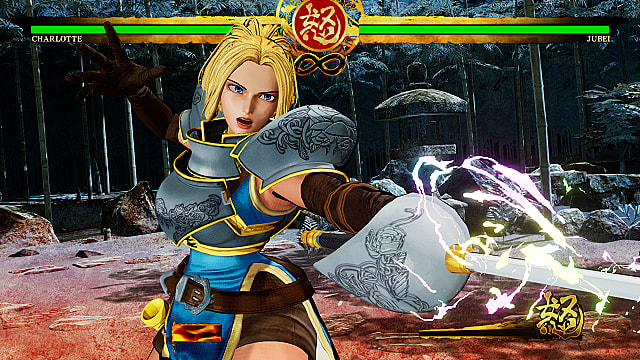
The first thing that will immediately strike you in Samurai Shodown is the unique style and presentation. Minimalist koto music plays over the background of menus and fights, splashes of color blast across the screen, and an announcer straight from schlocky kung fu films introduces everything. It does a great job of setting itself apart from other fighting games on the market through its presentation.
As you start to dive into fights, more of the game's style shines through. Fighters feature gravity defying hair at almost every turn, while super moves and "lightning blades" fill the screen with over the top spectacle. The game's style most resembles 2008's Street Fighter IV, with elements of Dragon Ball FighterZ — characters are 3D but carry elements of pixel art and stylized cell shading.
Background stages are what you typically see in fighting games: a sailing ship, several outdoor scenes, and a few dojos and arenas. Generally, everything looks good, but a few elements lack polish.
Characters frequently have bits that clip through other bits — with the giant swords and huge hair, you'll often see things sticking through things that should not be. One stage full of little animals is so jarringly bizarre looking — clearly the same effort was not put into the bear standing in the background as the game's characters — that I'm honestly surprised it made it into the final game.
Crossed Swords
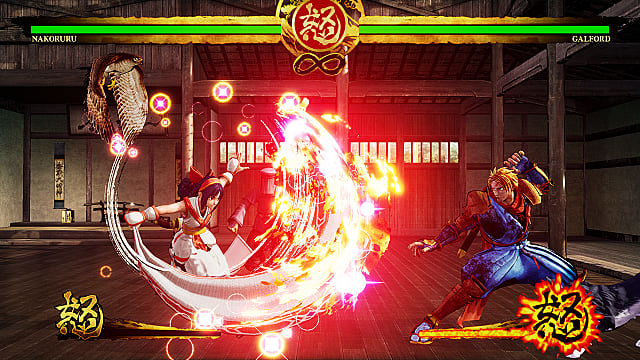
All the presentation in the world doesn't mean a thing if Samurai Shodown plays terribly, and it certainly takes a different approach than other major fighting game franchises.
Samurai Shodown is slow and deliberate in its approach to deadly battles; it has four buttons (light attack, medium attack, heavy attack, and kick), and each fighter has a variety of special moves. Cooldown times on whiffed attacks, especially heavy attacks, are massive. They do a ton of damage — about three will finish a fight — but missing or having them blocked will lead you wide open to a counterattack.
On top of that, each fighter has two extremely powerful, once-per-match attacks that will take off between 50% to 75% of your opponent's life. Samurai Showdown does not feature massive, screen stretching combos full of cancels and meter-management shenanigans; it rewards you for proper spacing and understanding matchups. Play defense, watch your opponent's tendencies, and strike when they are vulnerable.
It makes sense, considering this is a game where every fighter hits with a deadly weapon. Fights should feel like they can be over with one careless, sloppy mistake. Because of that, fights feel very deliberate and methodical as the fighters try to feel each other out and look for openings.
That said, Samurai Shodown is not a game that is friendly to beginners. Button mashing will get you whipped into submission by anyone who is passingly familiar with the game. There are a lot of defensive options available to fighters as well — disarming your opponent, dodging attacks, flipping sides and stances — that are buried within the game's tutorial.
Samurai Shodown is not going to work for those of you who want a casual, couch beat-em-up to play with your friends. This is a game that rewards you for being a student; learn each character, matchup, and ability, then go online and exploit those who haven't done their homework.
Famine in Japan
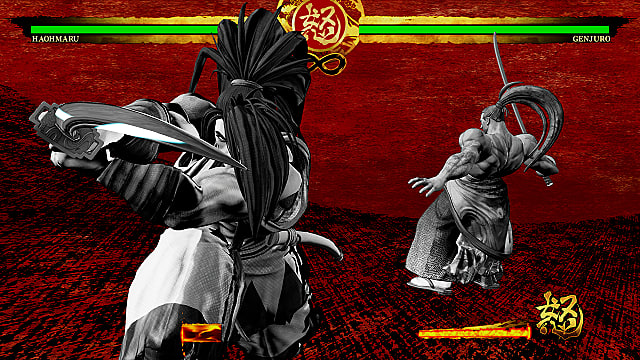
Samurai Shodown is loosely based in 18th century Japan, and each character has a story mode wherein they try to discover the cause of the supernatural sickness that plagues the country. Characters come from a wide variety of fairly stereotypical fighting game backgrounds: pirates, ninjas, noble warriors. There are a few oddballs, as you'd expect — a Kabuki actor who hops around on a single foot, a feng shui expert who conjures the elements to fight for her, a massive fighter who literally takes up twice as much space as any other character.
The characters look good, and certain aspects of their presentation work, but most of the voicework is... questionable.
Galford, a blonde American ninja pirate with a pet husky named Poppy, delivers a stuttering performance of Shatner-esque skill. Nearly every character sounds like they are shouting all their lines in surprise. They certainly aren't sleepwalking through their delivery, but it seems a bit out of place in a world full of famine and death battles for everyone to be so excited.
Besides story mode, it's got what you'd expect as far as ways to play the game. Online and offline versus mode, training mode, and a gallery to listen to music and look at concept art. The only out of the ordinary mode involves fighting "CPU Ghosts."
Samurai Shodown includes a feature that analyzes how you play specific characters, creating an AI for each character based off your play style. You can then upload these ghosts to a special mode and let other players take them on.
In theory, this is a great idea. If a certain character gives you trouble or, even better, a certain player's piloting of that character, you could go online and practice against that style. It will only be as good as the game's audience, however; one of the ghosts I fought while reviewing spent our entire fight backdashing into the corner. There's room for improvement, basically.
And, while this is a nice idea, it is still just a slightly different "You vs. CPU" mode. If Samurai Shodown takes off, this mode could lead to some exciting and heartbreaking moments on live streams. Otherwise, if players want to practice against good competition, it seems like taking to ranked battles will be the best way to go.
Kabuki Theater
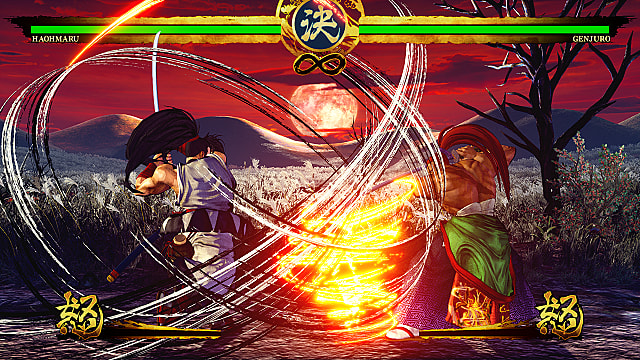
Pros:
- Unique, polished style
- Fighting mechanics are different than competitors
- Interesting ideas
Cons:
- Execution is a bit lackluster
- Not many options or modes
- Loading times are very long
- Not very beginner-friendly
Samurai Shodown is a solid re-entry into the arena for the long-dormant series. It takes some getting used to if you're into the rushdown, combo-heavy style of many other fighters, but it is very rewarding for those who put the time in to learn the systems.
It lacks the polish or variety of the big hitters on the market like Street Fighter, Mortal Kombat, or Smash Bros., however, but it has the niche appeal that could carve out a small space for itself in the fighting game landscape.
[Note: A copy of Samurai Shodown was provided by SNK for the purpose of this review.]
0 comments:
Post a Comment